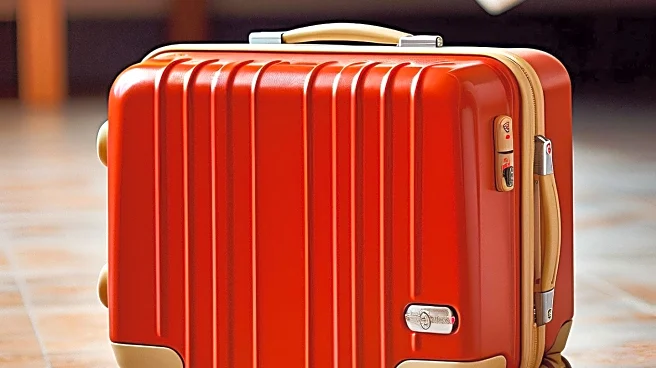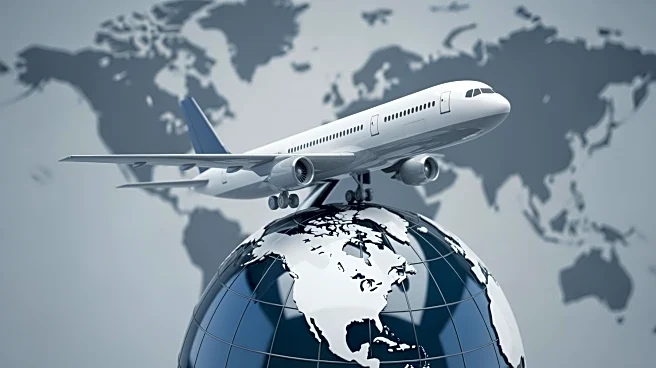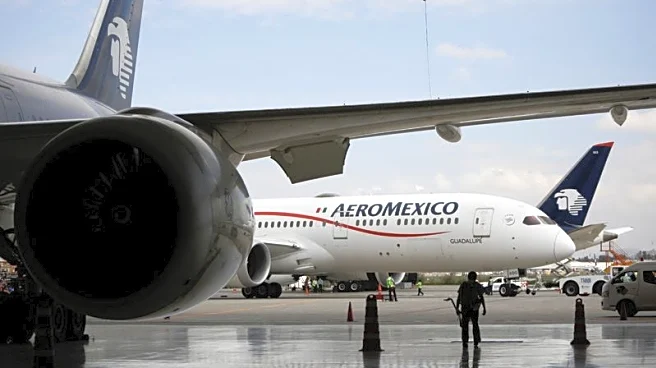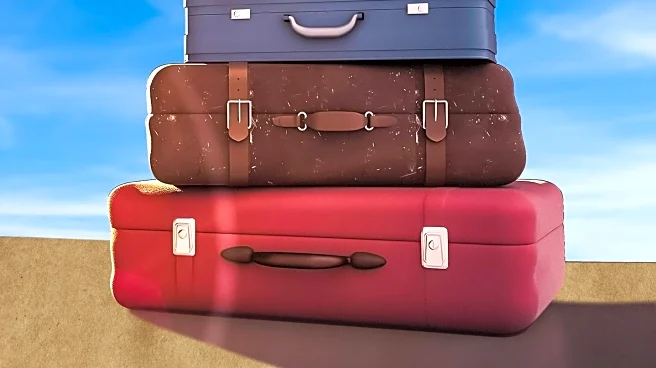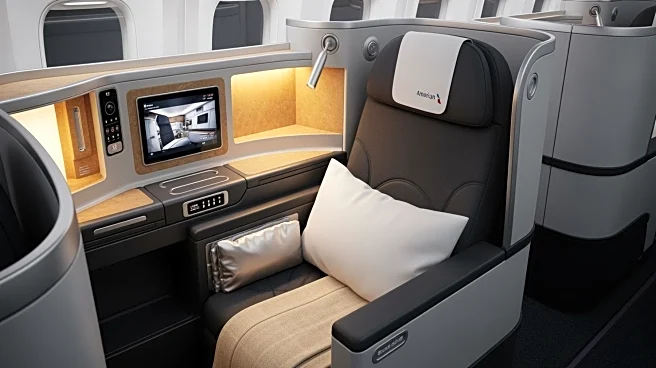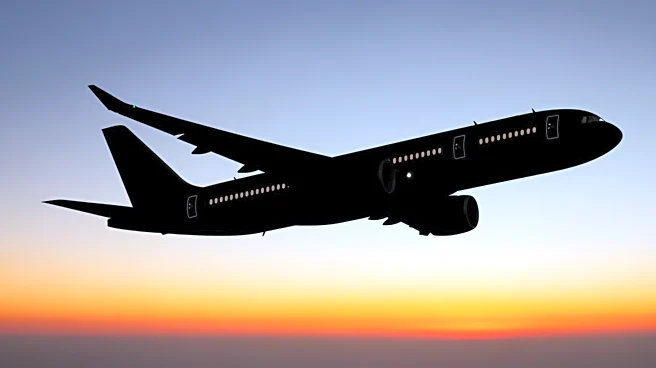What's Happening?
A recent guide has been published detailing the best carry-on bags that meet the size requirements of major U.S. airlines, including Delta, United, American, JetBlue, Alaska, Southwest, and Allegiant. The guide emphasizes the importance of adhering to
the maximum size of 22-by-14-by-9 inches for carry-on bags, which is a common standard among these airlines. The Rockland roller bag is highlighted as a suitable option, fitting these dimensions closely. It features a durable, lightweight hard shell, multi-directional spinner wheels, and an ergonomic telescoping handle. The bag is available in multiple colors and includes a mesh zip pocket inside, with an expandable main compartment. However, expanding the bag may exceed the size limits set by some airlines.
Why It's Important?
Understanding carry-on size requirements is crucial for travelers to avoid additional fees and ensure a smooth boarding process. As airlines continue to enforce strict baggage policies, having a compliant carry-on bag can save time and money. The guide provides valuable insights for frequent travelers, especially those who fly with multiple airlines. The Rockland roller bag's features, such as its hard shell and spinner wheels, offer convenience and protection for personal belongings, making it a practical choice for travelers. This information is particularly beneficial for those who travel frequently for business or leisure, as it helps them make informed purchasing decisions.
What's Next?
Travelers are likely to continue seeking luggage options that meet airline requirements while offering durability and convenience. As travel demand increases, manufacturers may innovate further to create bags that maximize space within the allowed dimensions. Airlines might also review and update their baggage policies, potentially leading to changes in size or weight limits. Consumers should stay informed about any policy changes to avoid unexpected fees or complications during travel.
Beyond the Headlines
The focus on carry-on compliance reflects broader trends in the travel industry, where efficiency and cost-effectiveness are increasingly prioritized. As airlines face economic pressures, they may continue to enforce and even tighten baggage policies. This could lead to a greater emphasis on designing luggage that not only meets size requirements but also offers additional features like charging ports or enhanced security. The travel industry may also see a rise in personalized travel experiences, influencing the types of luggage travelers prefer.
